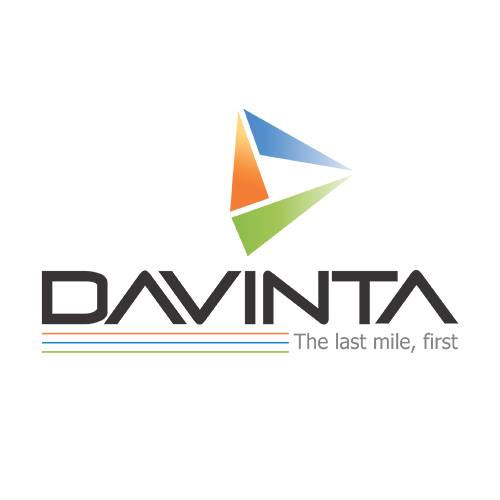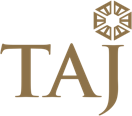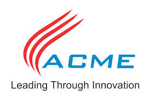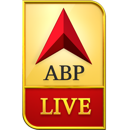Purposive Overview of Form 1120-S
Form 1120-S is the US income tax return filed for reporting the income, gains, credits, deductions, losses, and other business information for the tax year of the S-corporation registered in the USA. It is an income tax document to be filed under the purview of the Internal Revenue Service (IRS).
The Form 1120-S also reports the shareholders' share of income, credits, and other relevant deductions for the tax year. It must be filed only if the corporations have already filed Form 2553. The shareholders of every S-corporation need to mandatorily file Form 1120-S to ensure compliance with the IRS taxation regulations, highlight the ownership responsibility of the shareholders, offer limited liability protection, make it easy to pay taxes, and get any refunds (if they exist).
Form 1120-S and Form 1120 are two different IRS forms that must be used by different organizations wherein Form 1120-S is filed for recording the income, profit, gains, and deductions of S-corporations, whereas Form 1120 is filed to record the income, profit, gains and relevant deductions of the C-corporations.
What is S-Corp?
An S-Corp, also known as an S-corporation, is a small-scale corporation or business unit that ensures the limited liability of the owners and shareholders and further opts for the pass-through taxation structure. For tax purposes, the S-corporation shareholders are taxed on their share of profits; hence, the corporation is not authorized to pay any federal taxes on its own.
The S-corporations are different from C-corporations in terms of reporting the income of the corporations wherein the C-corporation files and pays the federal income tax, whereas the corporations are not required to file a federal income tax return for the corporation and pass all the income, deductions, and financial losses directly to the shareholders.
The Internal Revenue Code of the USA has well-established rules for its incorporation. The rules provide for
- Must have less than 100 shareholders
- Shareholders must be an individual, trusts, or an estate
- Shareholders must be a resident of the USA.
S-corporations enjoy a tax advantage, which stands in the capacity of pass-through entities to file taxes. This means that pass-through entities, i.e., an S-corporation, are not authorized to file the federal income tax return, which is passed on to the shareholders of the corporations.
Who must file Form 1120-S?
It is mandatory to file Form 1120-S for every tax year. The answer to the question of who is authorized to file Form 1120-S lies in the following list provided below
- Business owners filing Form 1120-S
- A company or an LLC elected to be taxed as S-corporations
- A corporation or legal entity accepted for election by the IRS
- An individual who is a resident of the USA
- A trust
- An estate
- Certain other tax-exempted organizations, etc.
Why is Schedule K-1 used?
Schedule K-1 is a form that the shareholders of the corporation must fill out to report the share of the corporation's income, deductions, credits, and other items summarizing the share of the shareholders to file their personal income tax return, i.e., Form 1040. The Form Schedule K-1 is divided into 3 parts, which contain information regarding the corporation (part 1), information regarding the shareholders and their investment in the corporation (part 2), and information regarding the shareholder's share in the income, deductions, credits, and other items of the current year (part 3).
Step incorporating the procedure to file Form 1120-S
Form 1120-S must be filed according to the guidelines set by the Internal Revenue Service (IRS) to avoid any errors or any other discrepancies (if any). The detailed procedure that the S-corporations must follow for filing Form 1120-S includes the following steps, as provided below
Step 1: Gather all necessary information and other documents
Form 1120-S, which is a five-page lengthy document, includes recording all the pertinent information related to the business operations as provided below
- The complete details of the corporation, including name and address
- The business activity code number (space B on page 1)
- The EIN of the business (space D of page 1)
- The date of incorporation of the S-corporation as mentioned on the Articles of Organization of the corporation (space E of page 1)
- The calculative amount of assets of the corporation (space F of page 1)
- Information regarding the balance sheet of the corporation
- The statement of profit and loss for the Corporation
- The accounting method used- whether cash method or accrual method
- The transaction history of the shareholders of the corporation
- Any independent contract payments (if any)
- The total number of 1099 contract workers and W-2 employees engaged in the S-corporation
- List of products and services offered
- The effective date of the S-corporation’s election (through Form 2553).
A list of relevant forms, schedules, and statements attached by the shareholders while filing:
- Form 8996 - for qualified opportunity fund
- Form 3800 - general business credit
- Form 1120-S includes:
- Form 7004 - an automatic extension of time to file
- Forms 940, 941, and 944 - for employment tax returns
- Form 1099 - recording miscellaneous income
- Schedule K-1 - for outlining the personal income tax of the shareholders
- Schedule K-2 - reports the items of international tax relevance from operations of an S-corporation
- Schedule K-3 - reports the share of the shareholders on items reported in the Schedule K-2
- Form 1125-A - showing data regarding the cost of goods sold
- Form 6252 - showing installment sale income
- Form 4797 - outlining the values for sales of business property
Step 2: Where to file Form 1120-S
The S-corporations can opt for two different methods of filing Form 1120-S for the tax year. The first method accounts for the use of electronic tax software, and filing of Form 1120-S is witnessed through the Internal Revenue Service (IRS) website, which is considered the cheapest and the most effective way of filing Form 1120-S. Either way to prepare and file the tax Form 1120-S is through the mail, i.e., physically at the address of the IRS, as provided below
- If the total assets of the S-corporation are less than $10 million and the Schedule M-3 is not attached till the end of the tax year, the mail for filing the tax Form 1120-S must be sent to the respective address of the Department of the Treasury, Internal Revenue Service Center, located in the State of Missouri
- If the total assets of the S-corporation are more than $10 million or less than $10 million and the Schedule M-3 is also filed at the end of the tax year, then the mail for filing the income tax return of the S-corporation through Form 1120-S must be sent to the Department of the Treasury, Internal Revenue Service Center, located in the State of Utah
- If the total assets of the S-corporation values at any amount (no fixed value) at the end of the tax year, then the application for filing the income tax return of the S-corporation must be mailed to the respective address of the Department of the Treasury, Internal Revenue Service Center, located in the State of Utah
- If the principal business or official address or an agency of the S-corporation with the total assets of no fixed value at the end of the tax year is located in a foreign country or the US territory, the respective address of the Internal Revenue Service Center at Utah must be used to mail the application for filing the income tax return of the S-corporation, i.e., Form 1120-S.
Step 3: Report your income
After deciding on the correct method to file Form 1120-S, the next step requires reporting the income generated from the trade or business operations of the S corporation. The provision for reporting income is given on the 1st page, lines 1a to 5 of Form 1120-S, which the S-corporation shareholders must report. The information or the details of the income, except the tax-exempt income, must be reported to calculate the total income (profit or loss) of the S-corporation, including the following:
- Information concerning the gross receipt or sales
- The cash or credit refunds for returned merchandise, rebates, and other allowances
- The value for reporting the cost of goods sold- along with Form 1125-A
- The calculated value of Gross profit
- The value for net gains or losses- along with Form 4797
- The value of any other trade or business income or losses, including interest income, recoveries of bad debts, and taxable income from insurance proceeds. (If any).
Step 4: Record Expenses and Calculate relevant deductions
Once the total income is calculated (line 6), the next step requires the S-corporation to report all the relevant expenses and other deductions incurred during the trade or business activities to calculate the total amount of the ordinary business income. Recording the business expenses from lines 7-20 is a crucial step in filing Form 1120-S, which includes the following deductions to be made
- The compensation of the officers engaged in carrying the trade or business activities of the S-corporation- along with Form 1125-E
- The total value of salary and wages paid during the tax year to the employees of the S-corporation
- The cost of repairs and maintenance of the labourers and other relevant supplies (i.e., not mentioned anywhere on Form 1120-S)
- The value of bad debts that become worthless during the tax year
- The value for the payment of property rents, advertisements, taxes, licenses, interest, depreciation of the assets, pensions, profit-sharing, plans, etc.
- The value for fringe benefits paid or incurred on employees
- With the depleting value of timber, energy-efficient commercial buildings, and other relevant deductions (if any) - as provided in line 20.
Step 5: Record the Taxes and payments (if any)
The next step requires calculating the correct tax value and payments accrued or paid by the S-corporation for the tax year. The circumstances when the S-corporation owes taxes are recorded under lines 23a to 28, wherein the excess net passive income and LIFO recapture tax, investment credit recapture tax, and estimated tax penalty (if any) are recorded by the S-corporation previously holding the status of C-corporation or by an S-corporation engaged in a tax-free re-organization with a C-corporation. After calculating the taxes born by the S-corporation for the tax year, the next lines, 27 and 28, require the calculation of any refund of overpayment directly to the checking or savings account of the corporation at any US bank or financial institution.
Step 6: Complete Schedule B
The shareholders of the S-corporation filing Form 1120-S must answer all the relevant keys or questions for reporting the ordinary income, dividends, interest, and other income of the shareholders as mentioned in Schedule B on pages 2 to 3 of the IRS tax Form 1120-S. Schedule B contains the other relevant information about the S-corporation, providing the complete details of the corporation and the shareholders, the choice between the accounting method used by the Corporation, and the information regarding the outstanding shares of the restricted shares, outstanding stocks, filing of Form 8918, 8990, etc.
Step 7: Complete Schedule K
The next step requires filing out one Schedule K by every shareholder to report the income, tax deductions, and tax credits for the shareholders engaged in the S-corporation tax year. Here, the shareholders are accountable for reporting the pass-through income, credit, deductions, alternative minimum tax items, and other information in lines 1 to 17 of Schedule K, attached on pages 3 to 4. Schedule K is a summary schedule encompassing the details of all the shares of S-corporation's shareholders, whereas Schedule K-1 is a detailed schedule providing separate shares for every shareholder.
Step 8: Complete Schedule L
The shareholders filing Form 1120-S must also fill out Schedule L, which contains an overview of the S-corporation through a balance sheet for calculating the assets, liabilities, and shareholders' equity for the tax year. The balance sheet reported in Schedule L must be true and in accordance with the books and records of the corporation. The details in Schedule L are not required to be filled out if the corporation answered ‘yes’ in question 11 of Schedule B. The information in Schedule L includes an overview of the cash in hand, inventory, loans, and other liabilities of the S-corporation’s shareholders at the beginning and end of the tax year.
Step 9: Complete Schedule M-1 and M-2
The next step requires filing out Schedule M-1 reporting the revenue and losses, i.e., taxable and non-taxable income, and deductible and non-deductible expenses of the S-corporation either in case the gross receipt or total assets of the S-corporation at the end of the tax year is more than $250000 or in case when the S-corporation’s shareholders answered ‘no’ in question 11 on Schedule B of Form 1120-S.
Schedule M-2 is the final schedule on page. It analyses the accumulated adjusted accounts, shareholders' undistributed taxable income previously taxed, accumulated earnings, and profit, providing a detailed look at the capital accounts of the S-corporation's shareholders. The information reported on Schedule M-2 is relevant to accurately reporting the basis of the corporation's debts and stock of the shareholders.
Step 10: Sign and submit Form 1120-S
The last step requires the s-corporation to sign, date, and submit Form 1120-S by the authorized persons engaged in the operations and management of the corporation. The list of authorized persons includes
- The president of the S-corporation
- Corporate officer of the S-corporation
- Any employee of the S-corporation (if authorized).
The due date for filing Form 1120-S
The due date for filing Form 1120-S is on the 15th day of the 3rd Month after the end of every tax year of the S-corporation. If the tax year of your business ends according to the calendar year, i.e., 31st December, then the due date for filing Form 1120-S must fall on 15th March after the end of every calendar year. An extension of 6 months can be filed through Form 7004 for any delay in filing the business tax return, i.e., Form 1120-S. The income tax return must be filed on the next business day in case there is a public holiday or a weekend on the date of filing Form 1120-S, and lastly, the form must be filed on the 15th day of the 3rd month after the dissolution of the S-corporation (if the situation arises).
Also, if the situation arises when the shareholders of the S-corporation fail to timely file Form 1120, then every shareholder will be charged a penalty fee for late filing of the tax Form 1120-S.
Tips we can provide for tax planning
If you aren't familiar with the process of filing Form 1120-S, then you can choose Enterslice's professional services, which provide hassle-free simplified steps or procedures based on certain factors like identifying tax strategy, IRS audit management, integrating software solutions, timely filing of Form 1120-S, try limiting the liability, providing a financial advisor for your business which assists in keeping accurate financial reports of the business and addresses the questions about business codes and other accounting methods.
We at Enterslice also ensure that we handle all the hard parts of filing accurate tax Form 1120-S, corporation expenses, bookkeeping, and payroll, and provide tax advice and equity education to your team if required.

 (+1) 6292766228
(+1) 6292766228





























 Live Chat
Live Chat